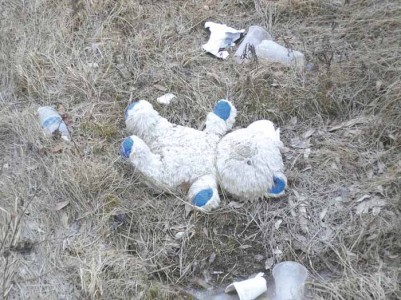 Few stories illustrate the widening chasm between rich and poor as clearly as the story of Attawapiskat. The chasm is captured in Vicki Lean’s inspiring documentary, After the Last River.
Few stories illustrate the widening chasm between rich and poor as clearly as the story of Attawapiskat. The chasm is captured in Vicki Lean’s inspiring documentary, After the Last River.
When the world’s largest diamond company, De Beers, opened a mine 90 km upstream from the First Nation community in northern Ontario, community members and environmental groups were concerned. They hired Lean’s father, Dr. David Lean, an environmental biologist specializing in ecotoxicology, to analyze the effect of the mining activity on mercury levels downstream.
In 2008, Vicki Lean visited the community with his father. “The trip opened my eyes to a very complicated situation,” she said.
Vicki Lean found herself drawn to the story of Attawapiskat and continued visiting the community regularly over the course of her Masters in Fine Arts at Toronto’s York University. As such, she was present – and shooting – during the community’s housing crisis in 2011.
The South African-based De Beers had recently closed down controversial operations in Angola and the Democratic Republic of Congo and they were trying to improve their public image by mining in Canada. Company representatives visited Attawapiskat every few months for community meetings, but never stayed long.
Vicki Lean explained that there was a certain degree of engagement between De Beers and Attawapiskat, but that it wasn’t without problems. In early 2013, community members blockaded the ice road to the Victor Mine, and the two parties entered into mediation.
Not being a community member herself, Vicki Lean could not say if all the issues had been resolved sufficiently, but she believes community members would say that many things still need to be addressed before the company opens another mine on their traditional territory.
Many of these problems concern the Impact and Benefit Agreement (IBA). The IBA is only available to First Nation members, so Vicki Lean was only able to discuss what had been described to her. She explained that it was essentially “a business deal between Attawapiskat leaders and De Beers about what the benefits would be and a framework to address the environmental costs.”
However, there are gaps in terms of the process and costs of implementation. Moreover, Vicki Lean explained, “It doesn’t address high need areas in the community, like housing and infrastructure, the focus is only on jobs and business opportunities.”
The IBA includes a trust fund, but that is earmarked for future generations and cannot be applied to current problems, like the housing shortage.
The Harper government’s use of a third-party manager during the housing crisis illustrates the strained relationship between the government and Ottawa. Evidence of this can be seen in the treatment of Chief Theresa Spence during her six-week-long hunger strike in late 2012 and early 2013, which is included in the film.
Of this rocky relationship with the federal government, Vicki Lean stated, “The film really shows how much the current government has taken a hostile stance against First Nation communities that speak out, like Attawapiskat did. Getting a third-party manager was unreasonable and unlawful, according to the Federal Court, and the government wanted to tap into a deep-seated stereotype that unfortunately still exists in Canada.”
After the Last River shows what life is like in Attawapiskat with people living in shacks and tents, with buildings in serious need of repair and often contaminated with black mould. It highlights various medical issues that community members face, including autism and heart defects. It documents protesters braving frigid temperatures to demand a better school.
These hardships stand in harsh contrast to luxurious Toronto events – featuring ice sculptures and dancers – to promote Canadian diamonds. While the community has finally received its much-needed new school, a multitude of problems still remain unaddressed.
For more info: www.afterthelastriver.com

